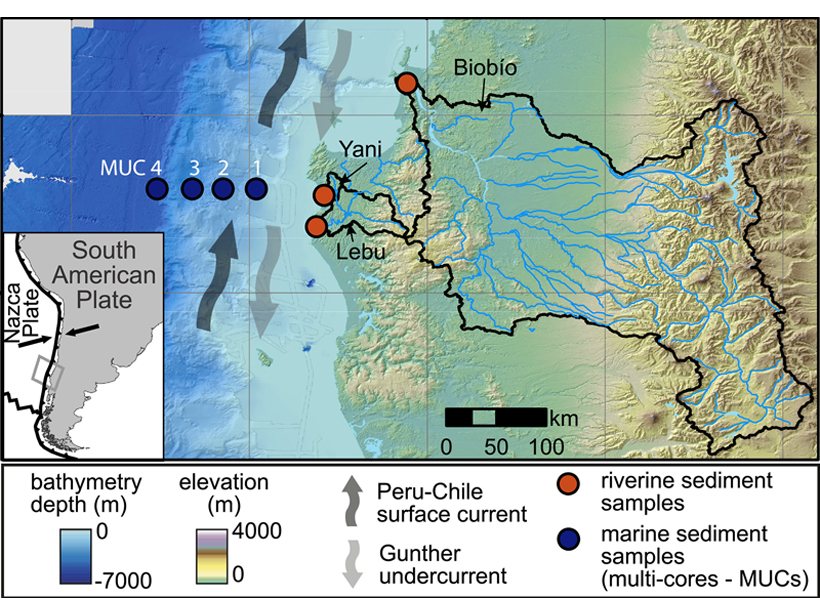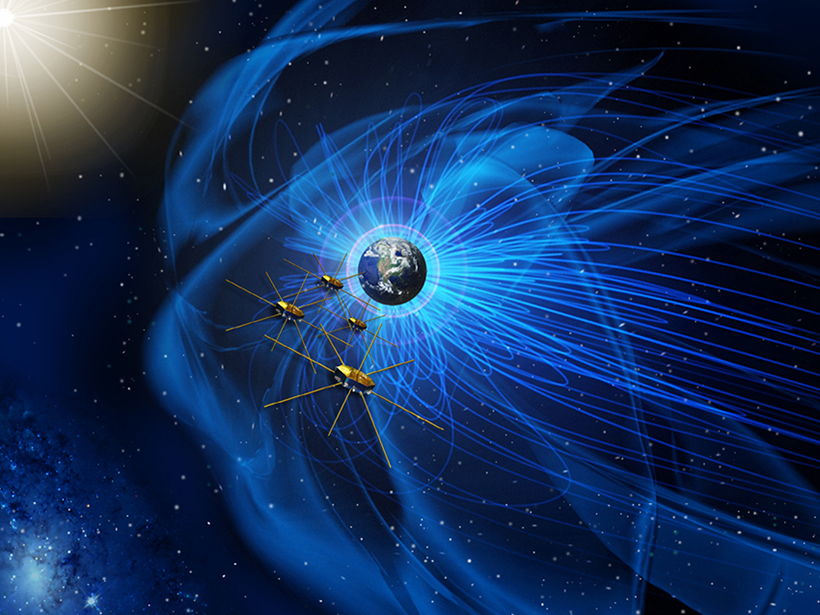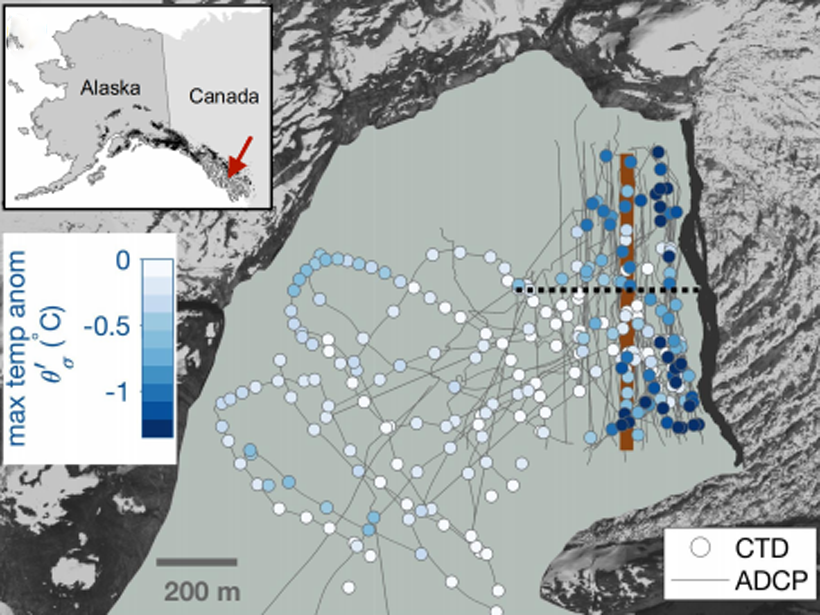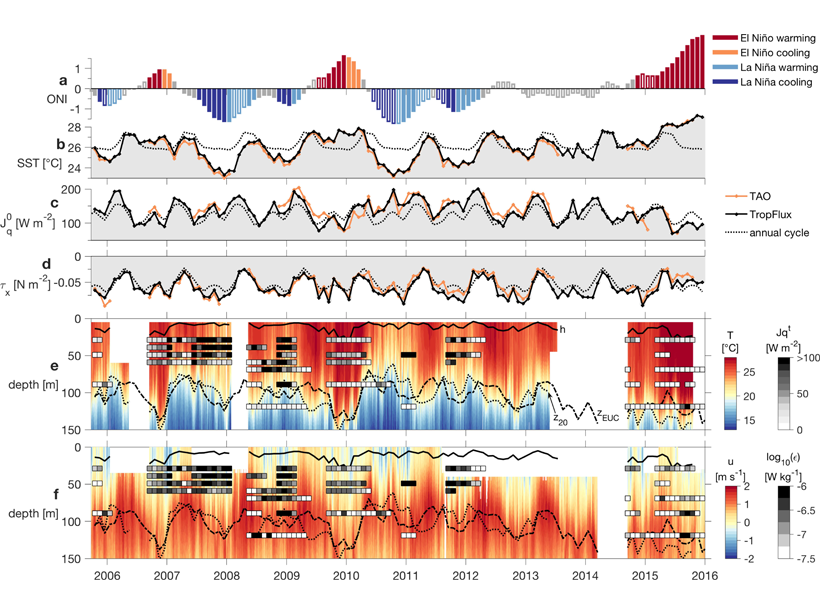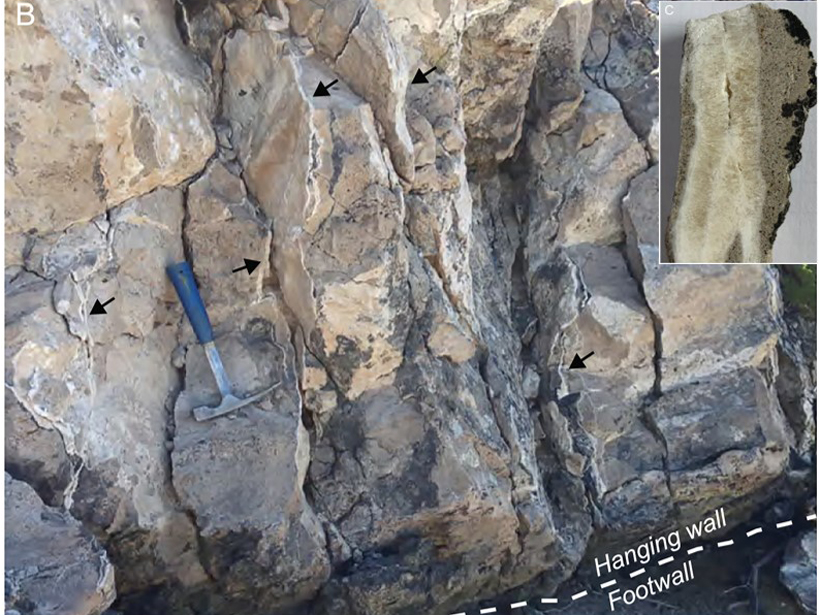The water-rich plumes erupting from Saturn’s moon Enceladus show the chemical signs of water-rock interactions deep within the moon, further implicating Enceladus as a potential habitat for life.
Geophysical Research Letters
Tracking Reverse Weathering
Using beryllium isotopes to track in situ formation of clays in the ocean, known as reverse weathering, will improve global models of atmospheric carbon dioxide and ocean alkalinity.
Deciphering Electron Signatures in Earth’s Magnetic Tail
A new analysis of spacecraft data collected near the tip of Earth’s magnetotail sheds light on how geomagnetic activity affects the motion of electrons in this region.
First Field Observations of Ocean Melting a Tidewater Glacier
Using autonomous kayaks, researchers carried out measurements of water properties near the terminus of LeConte Glacier and showed that ice/ocean interactions are more complex than thought.
Understanding Tropical Rainfall Projections Under Climate Change
A new mechanism explains changes in the probability distribution of tropical rainfall, which is not expected to change uniformly in a warming climate.
Oceanic Mixing Influences Development of ENSO Cycle
Changes in oceanic turbulence act to regulate the sea surface temperature during the evolution of the El Niño Southern Oscillation cycle.
Remotely Monitoring Groundwater Using Standard Techniques
Novel use of standard, single-station seismological techniques can be used to remotely monitor aquifer systems.
Fault Dips Figured in Kīlauea’s Caldera Collapse
Large-volume volcanic eruptions can create instabilities in the ground above magma chambers, leading to massive collapses and telltale calderas.
Atmospheric Rivers Trigger Heavy Snowmelt in Western USA
A rare atmospheric phenomenon that transports large quantities of water vapor into the coastal watersheds of the western USA is responsible for up to 10–20% of intense snowmelt events in the region.
What Controls How Quickly Faults Heal?
The rates at which fault zones “heal” through secondary mineralization have been elusive, but uranium-thorium dating of calcite growth in fault-zone fractures may provide the answer.


